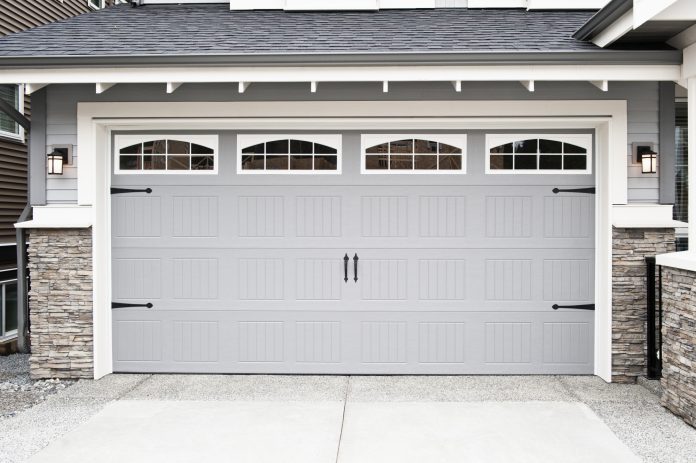The garage door is an incredibly convenient power-operated machine that enables homeowners to park their vehicles and access their homes securely. On average, a well-maintained garage door is expected to last approximately 30 years. However, like any other power-operated machine, they have their fair share of common problems. The problems range from simple things you can fix yourself like a faulty remote control to complex ones like broken springs that should best be left to top professionals like Chicago Garage Door offering garage door spring repair.
Uneven concrete in garage floors, walkways, patios and driveways can present a dangerous tripping hazard and liability exposure. It can also direct water into unintended areas causing pooling water, seepage, and in some cases causing structural damage to foundations. Poly injection, is a new concrete leveling technique that utilizes a dual component foam composed of super-strength polyurethane material.
When installing your garage door, your garage door installer most likely stressed the importance of regular maintenance to ensure its optimal working. Maintaining maintenance measures is the most effective way to reduce the number of problems that may need repairs hence saving you money in the long run. Before we go through common repairs, let’s first look at some of the best maintenance tips you can employ to care for your garage door.
- Inspect the Door and its Components: Regularly inspect the door and other related hardware such as springs and hinges for signs of damage or rust. Look for cracks and dents on the door and test if it seals tightly. You can do this by ensuring that you cannot see the light from the outside in the bottom and sides.
- Watch and Listen: Watch and listen to the door movements every time you open or close it and immediately look into any weird sounds from the door. A garage door in good condition should be relatively quiet and shouldn’t jerk.
- Inspect and Clear the Tracks: Tracks on both sides of the door should be aligned and clear from debris for them to work perfectly. The wheels on the door should easily roll upon opening and closing the door.
- Tighten the Hardware: The constant up and down movement and the associated vibration is bound to loosen the door hardware with time. Check out fasteners and other anchors and ensure all loose bolts are tightened.
- Lubricate Moving Parts: Rollers, bearings, and other moving parts should be lubricated at least twice a year to prolong their lifespan.
- Test the Auto-Reverse Feature: As a safety measure, your garage door should reverse back upon detecting an object on the bottom while closing. Ensure this feature works by placing a deterrent like a broom or cardboard on the bottom to test if it reverses.
Below are four of the most common garage door problems experienced by homeowners and whether or not you can DIY or call a professional repair company.
- Broken Springs
A broken spring is highly common among garage door repairs. Springs are always under intense pressure and may wear out over time with repeated use. They have a lifespan of between 10,000 to 20,000 cycles depending on the type of spring system. A broken spring means your garage door is inoperable and in need of urgent repair. It would help if you never tried replacing springs on your own as it is perilous due to the tension associated. Please leave it to a garage door professional.
- Broken Cables
Cables play an integral role in the working mechanism of a garage door system. They are designed to pull the garage door up during opening by using the tension provided by the springs. With time, they weaken and break, requiring replacement. One sign your garage door may need cable replacement is if it gets stuck halfway when opening. Like replacing broken springs, you should leave this to professional garage door technicians as it can be dangerous.
- Bent or broken Tracks
Your garage door system will stop working well if the tracks are misaligned or broken. You can make minor adjustments on the tracks to align them depending on the extent of the damage. All in all, it’s still a wise idea to have the tracks inspected by a professional who will then advise on whether it’s best to repair or replace them.
- Missing or Damaged Weather Stripping
The weatherstripping is located at the bottom or sides of the garage door and protects the inside of your garage from weather elements like rain and moisture. It also ensures debris doesn’t find a way into the garage. Replacing it is pretty easy, and you can DIY.
Garage doors may seem simple, but their working mechanisms are surprisingly complex. Its components are interdependent so that even a minor adjustment on one part may significantly affect another or all other components. This is why it’s always recommended to call a trusted expert garage door technician to tune and repair your garage door.










